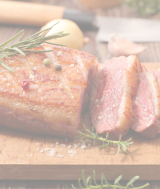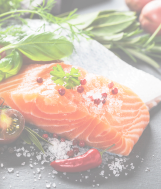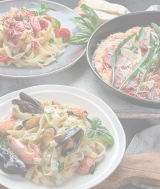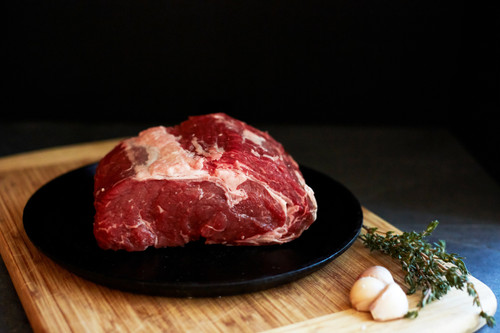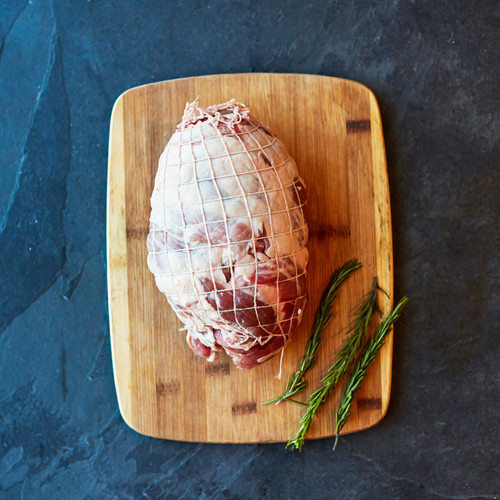Antibiotic Free, No Antibiotics Added, Without Antibiotics
Meat or poultry can carry the phrase "no antibiotics added" if the producers demonstrate that they raised the animals without antibiotics. Many producers use antibiotics at subtherapeutic levels to speed growth and prevent disease. The label, however, says almost nothing about the animals' living conditions or what they were fed. KOL Foods never adds antibiotics to our meat.
Beyond Organic
In order to meet the growing demand for organic, the organic industry has begun in some ways to mirror conventional food production. Synthetic chemicals approved by the organic program are widely used in certified food processing and many organic animals are raised in confinements eerily similar to conventional facilities.
Coined by Virginia farmer, Joel Salatin and popularized by Michael Pollan in Omnivore's Dilemma, Beyond Organic is a term used by those who do not buy into the industrial organic model. Beyond organic farmers, like our partners at KOL Foods:
-
Employ biodynamic practices, where the focus is on biodiversity and minimizing dependency on off-farm inputs;
-
Use bio-intensive practices, where farmers learn to naturally increase yield on a small acreage;
-
Rely less on fossil fuels. Part of the organic philosophy is to leave the land in better shape than it was before. Since pesticides are made from fossil fuels, certified organic already reduces its carbon footprint by not using them. ‘Beyond organic’ farmers tend to have more local suppliers and customers and use less tractor power;
-
Raising animals in pastures (many call themselves "Grass-Farmers");
-
Treat farm workers fairly. Some ‘beyond organic’ farmers feel that the lack of provision for social justice is another flaw in the USDA standards;
-
Encouraging wildlife on the farm, simultaneously restoring natural habitats while growing food.
CAFO & AFO vs No Confinement
On factory animal farms, known as Concentrated Animal Feeding Operations (CAFOs), animals are routinely given a complex mix of feed additives and chemicals in order to cheaply and quickly produce the meat that stocks supermarket shelves. CAFOs promote maximum growth in minimum time and with minimum inputs. They let producers turn greater profits, but in doing so create serious health and environmental concerns. AFOs are small CAFOs and can be even more environmentally detrimental because they slip under the EPA's regulations.
CAFOs and AFOs concentrate animals, feed, manure and urine, dead animals, and production operations on a small land area. Feed is brought to the animals rather than the animals grazing or otherwise seeking feed in pastures, fields, or on rangeland. In a CAFO, animals suffer both physically and psychologically, and this reflects in the meat they produce. No Confinement is the opposite of CAFOs and AFOs - animals can move freely in a natural environment. KOL Foods never confines our animals.
Cage-Free
Cage-free only means that the poultry were not raised in cages. That said, they often still only have an area no larger than an 8.5x11 sheet of paper to move in and are often subjected to debeaking. KOL Foods poultry is raised outside on pasture as soon as they are safely able to, and until then, they have their own special chick condo!
Direct Trade
KOL Foods deals directly with small family-owned farms that use traditional growing techniques. We work with our farmers, without a middleman, so that our farmers and our customers both have the best experience possible.
Free-Range & Free-Roaming
The USDA approves free-range claims for poultry that were given "access to the outside" for 51% of its life. However, the USDA does not verify if the poultry ever actually went outside nor does it define what outside is - a tiny concrete pad could meet their definition. Regardless of how enriching the outdoors might be, it’s unlikely that the chickens go outside- they are, afterall, still chickens. KOL Foods poultry is raised outside on pasture as soon as they are safely able to, and until then, they have their own special chick condo!
Grass-Fed vs. 100% Grass-fed/finished
This term is used similarly to Pastured/Pasture-Raised in that all cattle are raised for part of their lives on grass (pasture) before they are sent to feedlots and so can describe themselves as "grass-fed". Folks looking for beef raised the natural way -on grass for their entire lives with no feedlots- need to look for "100% Grass-fed." 100% Grass-fed is a term verified by the USDA that ensures that ruminants (cows, sheep) were raised only on pasture.[ii] KOL Foods meets the more stringent standards of the American Grassfed Association - ruminants are only fed grass, live on pasture, and aren't given animal bi-products, arsenic, antibiotics, or hormones. Because the 100% grass-fed method depends on the weather and space, the meat tends to be more costly and can be difficult to obtain.
Managed Grazing
Managed grazing is animal agriculture that moves livestock through the land in the same way that elk and bison moved through the plains: bunching up in a relatively small area, eating it down, trampling what they haven’t eaten into the topsoil, delivering their natural fertilizer to the land, then moving on to a new place and doing the same there. Each grazed area -paddock- is allowed ample time to recover before the grazers return. Instead of predators, it may be human herders or solar-powered portable fences that keep the livestock in a particular area.
Natural
According to the USDA, a product containing no artificial ingredients, colors, and minimal processing can be labeled "natural." Natural doesn't tell the consumer anything about an animal's living conditions, whether antibiotics or hormones were used, or what it ate.
No Added Hormones
Hormones are also used in conventional beef production to increase growth. Look for "hormone-free" to ensure that these exogenous products weren't used. Hormones are not legal to use in poultry production; arsenic and antibiotics are used to speed growth instead. KOL Foods never adds hormones to our meat.
Pastured & Pasture-Raised vs. 100% Pastured & 100% Pasture-Finished
These terms imply that animals were raised outdoors on pasture. However, since the term is not regulated or certified by the USDA or anyone else, there is no way to ensure if any claim is accurate. All cattle are "pasture-raised" for the first few months of their lives before they are sent to feedlots, so even the most confined beef can be described as "pasture-raised". Folks looking for beef raised the traditional way - pasture from birth their entire lives with no feedlots (and all the health, animal welfare and ecological benefits that come with it) - need to look for the "100%" marking. "100% Pasture-Raised" (like 100% grass-fed) indicates that the animals were never confined in feedlots, spent their whole lives outside on pasture living cow lives, and were never treated as cogs in a machine, however, these cattle can still be finished on corn in the pasture. In the case of poultry, 100% pastured/pasture-raised indicates that the poultry spent their entire adult lives on pasture; their youth (about four weeks, during which they are very temperature and weather-sensitive) is spent warm and happy in a special brooder designed exclusively for their comfort. KOL Foods exclusively sources 100% pastured beef, lamb, chicken, turkey, and duck.
Regenerative Agriculture
Regenerative agriculture enhances and sustains the health of the soil by restoring its carbon content, which in turn improves productivity. The result: vital microbes proliferate, roots go deeper, nutrient uptake improves, water retention increases, plants are more pest-resistant, and soil fertility compounds. Farms are seeing soil carbon levels rise from a baseline of 1 to 2 percent up to 5 to 8 percent over ten or more years, which can add up to 25 to 60 tons of carbon per acre.
USDA Organic & Industrial Organic
This certification has little to do with the animal's quality of life and mostly to do with their feed. USDA Organic meat is derived from animals that are fed organic vegetarian feed (no animal by-products) and had "access" to pasture or the outdoors. No hormones, antibiotics or cloned animals can be used. However, USDA Organic animals, for the most part, are still fed grain (corn) and raised in confined agricultural farming operations (CAFOs) - aka feedlots.
Vegetarian-Fed
Ensures that the animals are not fed animal by-products, however, it doesn't mean that they are raised on grass. Cattle fed corn in CAFOs (aka feed-lots) can still have this label. Unless the label states "100% Vegetarian Fed," it is possible the animal was fed animal protein made from "rendered livestock" (meat, bones, blood, fat, offal), sometimes of the same species. Vegetarian-Fed is not regulated by the USDA.
Grassfed Beef and Lamb Terms
Black Angus
A breed of cattle native to Scotland that is normally finished on corn. Black Angus are known for being exceptionally good mothers to their calves, and for being exceptionally marbled. Farmers who grass-finished often cross Black Angus with other breeds to improve muscling. Common cross breed choices include Hereford and Red Devon.
Foresaddle
Primal cut of lamb that avoids splitting the carcass, right from left sides. It includes the rib (rack), shoulder, breast and foreshank of both sides, still joined in the midline.
Hindsaddle
A primal cut of lamb that avoids splitting the carcass, right from left sides. It includes the loin, flank and legs of both sides, with the loin still joined in the midline.
Primal
A piece of meat that is originally separated from the carcass during butchering. The kosher primal cuts of beef are the chuck, brisket and shank, and rib. Non-kosher primals are the short plate, short loin, sirloin, flank and round.
Roast
A piece of meat roasted or for roasting and of a size for slicing into more than one portion.
Side
One half of the carcass, left to right.
Steak or Chop
A slice of meat, typically beef (chop for lamb), usually cut thick and across the muscle grain and served broiled, grilled or fried.
Subprimal
The result of dividing primals into smaller sections- these are the roasts you know and love!
Pasture Raised Poultry Terms
Broiler
A chicken raised for meat, approximately eight weeks of age, having carcass weights of 0.8 to 1.8 kg, and may be males or females. Our heritage birds grow more slowly than our broilers, taking about twice the time.
Brooder
A heated, enclosed place where baby chicks are kept during the first weeks of their life while they’re growing their feathers to keep themselves warm without assistance. Ours have ambient floor heating, special lamps, feeders, and waterers to keep our chicks as comfortable as they can be.
Capon
A castrated male chicken over nine weeks of age and with carcasses over 1.8 kg.
Cornish Hen
A young immature chicken (usually 5 to 6 weeks of age), weighing not more than 2 pounds dressed weight, which was prepared from a Cornish chicken or the progeny of a Cornish chicken crossed with another breed of chicken.
Debeaking & Beak Trimming
The partial removal of the beak of poultry, especially chickens and turkeys but also ducks, pheasants and quail. In the United States, beak trimming is common in egg-laying strains of chickens and turkeys as a preventive measure to reduce the incidence of cannibalism and feather pecking and improve livability, however, commercial broiler chickens are sometimes debeaked. In close confinement, cannibalism and aggression is common among turkeys, ducks, pheasants, quail, and egg laying strains of chickens of many breeds (including both heritage breeds and modern hybrids). Given the space to explore and much lower stress levels, KOL Foods chickens do not exhibit these behaviors. KOL Foods Poultry is never subjected to debeaking.
Fillet
A boneless and skinless cut of meat from the breast or thigh.
Fryer
Another name for a broiler, or chicken raised for meat. Like broilers, they are about eight weeks of age, have carcass weights of 0.8 to 1.8 kg, and may be males or females.
Hen
A female chicken that is at least one year old.
Pullet
An adolescent female chicken.
Roaster
Male or female chickens older than nine weeks with carcasses over 1.8 kg.
Rooster
An adult male chicken




